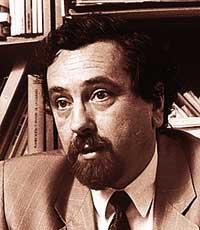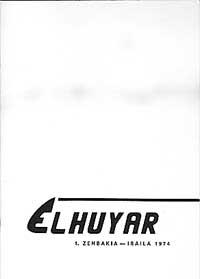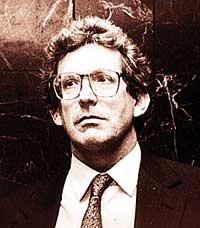ELHUYAR 1974-1995

Dear reader, if your age is forty, try to remember it; if you are younger, congratulations! : You could not remember the hard years of the sixties and early seventies. In those years it was not easy to work for Basque culture, not only because there was no financial aid, but because it was considered almost a crime, with all the consequences of a dictatorship.
However, at that time in many university centers of Euskal Herria, to address this situation, several groups were launched: Euskal Kultur Taldea (EKT). One of them was launched at the School of Engineers of San Sebastian in 1968 and, among other actions, we addressed science and technology in Basque. If I say that we start from scratch, I will not be far from the truth: The two pamphlets, “Pisia” and “Kimia”, are purely wartime purifiers, a scientific list of words made with good will and point. As you can imagine, the harvest obtained in that principle was not much less to put it before society.
But the years were coming forward and some of those who were in the Basque group school, after finishing the studies, went out to look for the job. However, we had the worm inside and in 1972, to continue the work started, we got in touch again. Thus, in a room of the San Ignacio Association of San Marcial Street in San Sebastian, on a Saturday afternoon we held our first meeting: Mikel Zalbide, Andoni Sagarna, Jesus Mari Goñi, Juanjo Gabiña and me, if I'm not mistaken (in the second meeting would come Iñaki Azkune). And so, every Saturday afternoon, distributing jobs among us and learning from each other, we begin our construction.
In order that what was achieved with the sap did not become a pipi-jan, we had to go outside and for this it was necessary a presence, a magazine. Think and decide. For starters, for the magazine and certainly for the group, we needed an appropriate name and what better than Elhuyar?

The brothers Fausto and Juan José Elhuyar, born in Logroño, had their American parents at the Real Seminario de Bergara, where they made the greatest scientific discovery obtained in the Basque Country, that is, the identification and separation of the chemical element called wolframio. The name was decided and since then both the group and the magazine were going to be Elhuyar.
The name yes, but to achieve this, two more things were needed: to overcome censorship, the official shadow of some prestigious association and, just in case, the name of a director. The second was simple: in a meeting I had to leave the classroom for a moment and when I returned I was appointed director. To get the first one, we went to the Real Sociedad Vascongada de los Amigos del País and after several conversations, we received their support.
In September 1974 the first issue of the magazine “Elhuyar” saw the light. Looked at by the eyes of today, that was simple and humble, but for us it was a great achievement.
Many years have passed and fortunately things have changed a lot. If this 100th issue of the new era you now have in your hands is really beautiful and spectacular, it is largely due to the fact that many others have been published before, much lower than him. And thanks to thousands of meetings, petitions and works full of illusion.
Researchers in Basque
To confess the truth, I do not remember very well why I wrote that article. At that time the debate that has been overcome today was immense. At that time, Adolfo Suárez said that Basque could not be used to talk or teach about nuclear chemistry.

This debate prompted me to write an article in Basque about the results of research conducted in the USA with Professor Ritchie. Professor Ritchie showed his conformity.
Before and now, to speak well of physics in Basque we must know and master two things well: physics and Basque. That is the necessary and sufficient condition. As my Basque was unable to explain precisely what was necessary, I addressed a friend. Ibon Sarasola helped me with wide hands.
Many researchers have gone along the way in Elhuyar's article. It has been a pleasure to see that many magazines around the world have referred to Elhuyar's article. Our work in linear theory has been followed by Mr. Pitarke, obtaining outstanding results in nonlinear theory. This work was awarded the Zumalabe Prize of Eusko Ikaskuntza and this year will be presented in the prestigious magazine Physical Review. That also makes me happy.
The article was published coinciding with the interview made by Mikel Zalbide. There, among other things, he said something to remember. The best way for the Basque University is to obtain chairs from the Basques.





